Insulation Installation Problems: 10 Complications that Lead to Home Insulation Nightmares
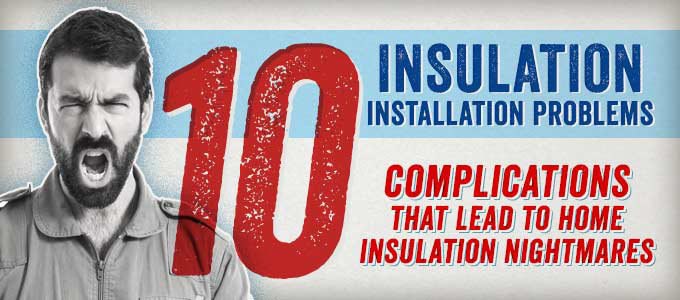

Choosing insulation for your home can be a big step and it’s important to know all of the things that could go wrong.
From choosing an insulation material to deciding between DIY or hiring a contractor, we have seen what can happen when insulation projects go south.
RetroFoam of Michigan has more than 17 years of experience insulating thousands of homes across the lower peninsula. With that experience, we have seen and fixed hundreds of insulation installation problems.
In our continued efforts to educate our customers, we have compiled a list of 10 insulation installation problems that could become a real nightmare.
Cellulose Insulation Installation Problems
Cellulose can be messy when it's installed, which can lead to a mess around your home.
Here are some of the cellulose insulation installation problems you might face.
Dense-Packed Cellulose Can Spread Throughout the Home
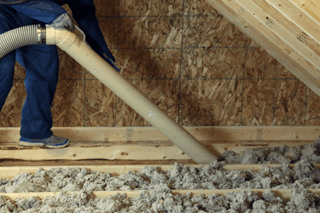
When installing dense-packed cellulose insulation, you must use great care to not spill the material.
With that being said, the cellulose will still get into any openings in the wall cavity, like electrical sockets.
Homes that have furnace ducts can expect that the cellulose dust will circulate throughout the home.
Solution: When installing cellulose insulation, the best thing to do is cover any openings to limit the amount of dust that will escape.
While this will limit the amount of dust, it won’t completely stop it from making its way into your home.
If the Cellulose Isn't Instaled Correctly, Your Home Will Still Be Vulnerable to Air Movement
If cellulose insulation isn’t installed properly, there can be gaps in the cavity which will allow for airflow.
Those gaps in cellulose insulation coverage will allow for air to move throughout the house, keeping it cold in the winter and hot in the summer.
Solution: When installing cellulose insulation whether it’s a DIY project or done by a contractor, the installer must ensure that the cellulose is placed inside the cavity at the appropriate thickness and there are no gaps.
Fiberglass Insulation Installation Problems
Fiberglass insulation can be difficult to work with during installation, especially as you try to avoid coming into contact with it.
Here are some of the fiberglass insulation installation problems you could face.
Fiberglass Can Be Hard to Install Yourself
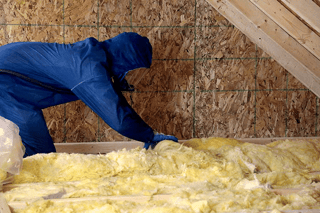
Installing fiberglass insulation isn’t an easy or pretty job.
The material has to be cut to the exact dimensions of the cavity where it is going to be installed. If there are any gaps, then air will be able to move into the home helping to raise energy bills.
Solution: The best practice if you aren’t the strongest in the handyman department will be to hire a licensed and experienced contractor to install the fiberglass insulation.
Coming into Contact with Fiberglass Can Be Hazardous to Your Health
Fiberglass insulation contains small particles of glass that can come loose and cause skin and eye irritations.
The particles can also be inhaled, causing respiratory issues as they become lodged in the lungs.
Solution: Wearing protective gear is a must when installing fiberglass insulation.
That includes long sleeves, pants, gloves, and goggles, according to the Occupational Safety and Health Administration (OSHA). It is also recommended that installers wear either a face mask or respirator when working with fiberglass.
Spray Foam Insulation Installation Problems
If spray foam isn't installed properly it can be a pain in the neck and a waste of money.
Here are some of the spray foam insulation installation problems you could face if it isn't done right.
The Spray Foam Wasn't Installed at a Thickness that Will Create an Air Barrier
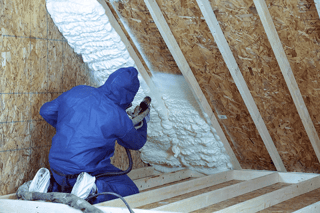
Spray foam insulation will create an air barrier capable of keeping your home warm in the winter and cool in the summer if it is installed at the appropriate thickness.
If an air barrier isn’t created, then air will move throughout the home causing appliance to work overtime to compensate.
Solution: Spray foam must be sprayed at the required thickness to create an air barrier.
For example, open cell spray foam must be installed at a minimum of 3 inches to create an air barrier.
As spray foam cannot be installed as a DIY project, make sure to talk to your contractor and do your homework to ensure you are both on the same page.
Spray Foam Insulation Isn't Installed Properly
The poor application of spray foam insulation can lead to several issues.
The poor installation includes off-ratio spraying of the foam, bad odors, and lack of adhesion.
Solution: Hiring a licensed and experienced contractor who offers a warranty on their work and product can save you a lot of headaches in the long run.
Also ensuring the contractor has been trained by the spray foam manufacturer can help to ensure they install the material correctly.
Do-It-Yourself Insulation Installation Problems
Installing home insulation yourself might seem like a good idea at the time, but could leave you holding the bag if things go wrong.
Here are some do-it-yourself insulation installation problems you might run into.
You Have to Teach Yourself How to Install the Insulation
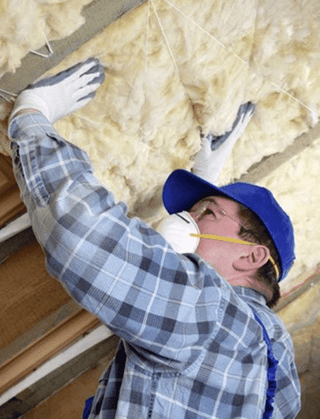
You will not only have to teach yourself how to install the insulation, but you will need to make sure the information is correct or you could be in a world of trouble.
Incorrectly installed insulation can leave air gaps, which will lead to air movement and an uncomfortable home.
Solution: If you are going to attempt to install insulation by yourself, make sure you find a trusted source to get your information from.
Bob Vila, the DIY Network, and HGTV are great resources.
Warranties Don't Apply When It's a DIY Project
You can’t warranty your own work and that warranty can save you if something goes wrong.
In the long run, since you can’t warranty or guarantee your own work, it will cost you more money to try and fix whatever is wrong.
Solution: The safest bet if you aren’t confident in your home improvement skills is to hire an experienced contractor.
It is bonus if that contractor guarantees their work with a warranty.
Insulation Contractor Installation Problems
You might think hiring an insulation contractor will keep you in the clear, but if they aren't experienced you could be in trouble.
Here are some insulation contractor installation problems that could make your project a nightmare.
The Contractor Should Be Insured and Offer a Warranty on Their Work

Insurance and warranties are two things you should think about when choosing a licensed contractor to insulate your home.
Accidents can happen and without insurance or a warranty, the homeowner might get left high and dry paying for any repairs.
Solution: Do your homework.
When meeting with contractors ask them if they are insured, licensed, and what happens in the case of an accident.
Ensure the Contractor is Licensed to Work in Your State
A contractor doing work in a Michigan home is required by law to be licensed in this state.
If they aren’t, then it could end up costing the homeowner money because they also may not be insured. If something goes wrong, the cost for repairs would fall solely on the homeowner.
Solution: It is important when choosing a contractor to ensure they are licensed in the state they are working in.
When applying for a license, the contractor is required to show proof of insurance.
Choosing the Best Insulation Installation for Your Home
RetroFoam of Michigan is licensed, insured, and has more than 17 years of experience insulating homes with foam insulation. We also offer a lifetime warranty on our products and workmanship.
If you are interested in spray or injection foam insulation for your home, give us a call at 866-900-3626, or fill out a request for a free estimate on our website.
Related Articles
Insulation Contractor Vetting Checklist: What You Need to Look For Before Signing the Contract
What is the Best Way to Install Insulation? (DIY vs Hiring an Insulation Contractor)
What Questions Should You Ask About Contractor Insurance Requirements?
About Amanda Emery
Amanda previously has worked as a breaking news and crime reporter, TV news producer, and editor in Flint and Detroit. Throughout her career as a journalist, she has won several awards from The Society of Professional Journalists - Detroit Chapter and the Michigan Press Association. As part of the RetroFoam of Michigan family, Amanda uses her experience as a journalist to write content that will help educate homeowners on the benefits of foam insulation. When Amanda isn’t writing, she’s spending time with her husband and rescued huskies. She also loves knitting, making art, cooking, and hosting dinner and a movie night for friends and family.


